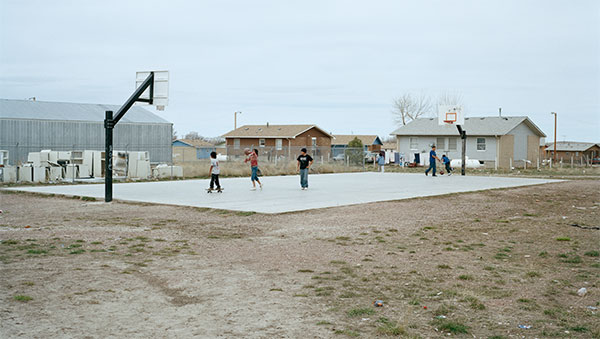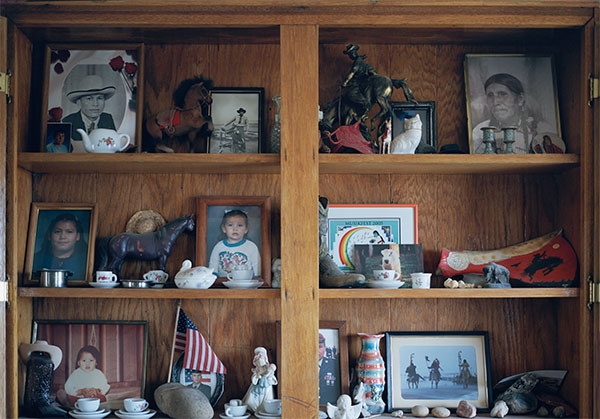Kalpesh Lathigra and the Oglala Sioux of Pine Ridge, South Dakota
Simply sign up to the Life & Arts myFT Digest -- delivered directly to your inbox.
It’s funny how, as children, we don’t question the games we play or the slow burn of what we take in through films, books and the conversations we have. It’s hard to think of a child of my generation not playing cowboys and Indians or watching John Wayne and Gary Cooper in action against the Indians — who were always the enemy. In these games I was always the Indian, never the cowboy. Why? Because, as a child, India — the subcontinent — is where I was seen as coming from, even though I was born and raised in Forest Gate, London, where I still live today.

This fact alone made it my destiny never to be the hero. Later, I would read books such as The Autobiography of Malcolm X, Soul on Ice by Eldridge Cleaver, and Notes of a Native Son by James Baldwin — books that were not part of the school curriculum but rather the curriculum of friends who felt abandoned by the school. Those texts transformed many of us marginalised kids growing up in the 1970s and 1980s. They described experiences I could genuinely identify with.

In 2006, a family friend gave me a copy of Bury My Heart at Wounded Knee, Dee Brown’s history of the displacement of Native Americans. I read it with an urgency that led me to Ian Frazier’s On the Rez, about the Oglala Sioux, who live on the Pine Ridge Indian Reservation in South Dakota. I became determined to visit some of these places. I found a charity, Lakota Aid, run by Brenda Aplin in Devon, England. Brenda had spent time on Pine Ridge and seen the challenges first-hand. The charity was raising funds for propane gas (for heating) and better housing during the harsh winters. With her help I was put in touch with Garvard Good Plume Jr, an elder at Pine Ridge who would become my guiding light.

I made my first trip to South Dakota in the summer of 2007. At first, I photographed very little — I wanted to meet the community, to see and feel the land. I was concerned about voyeurism and stereotypes and whether I would be able to connect with the people. But those fears were soon laid to rest as they told me stories about life on the reservation — how it used to be, what their lives were like now, and about their hopes and fears for the future. They accepted me with kindness, guidance and dark humour. More often than not I was called “the real Indian”.

There are serious problems on Pine Ridge: there is poverty, unemployment, alcoholism, violence and a high rate of suicide. But it is important to consider the determination to preserve their traditions; to keep the Lakota language alive despite the challenges faced. I wanted to make a series of photographs that would not add to the clichés about Native Americans but would be more lyrical and metaphorical, using ideas around historical landscapes, still life and portraiture.

These are photographs of people, places and things I connected with. They say something about my own experiences as the child of immigrants, seen through the experiences of others I can relate to.
‘Lost in the Wilderness’, the book of these photographs, is available at kalpeshlathigra.com, £32
An exhibition opens on March 17 at Webber Gallery Space, London W1; webberrepresents.com/gallery
Photographs: Kalpesh Lathigra
Comments